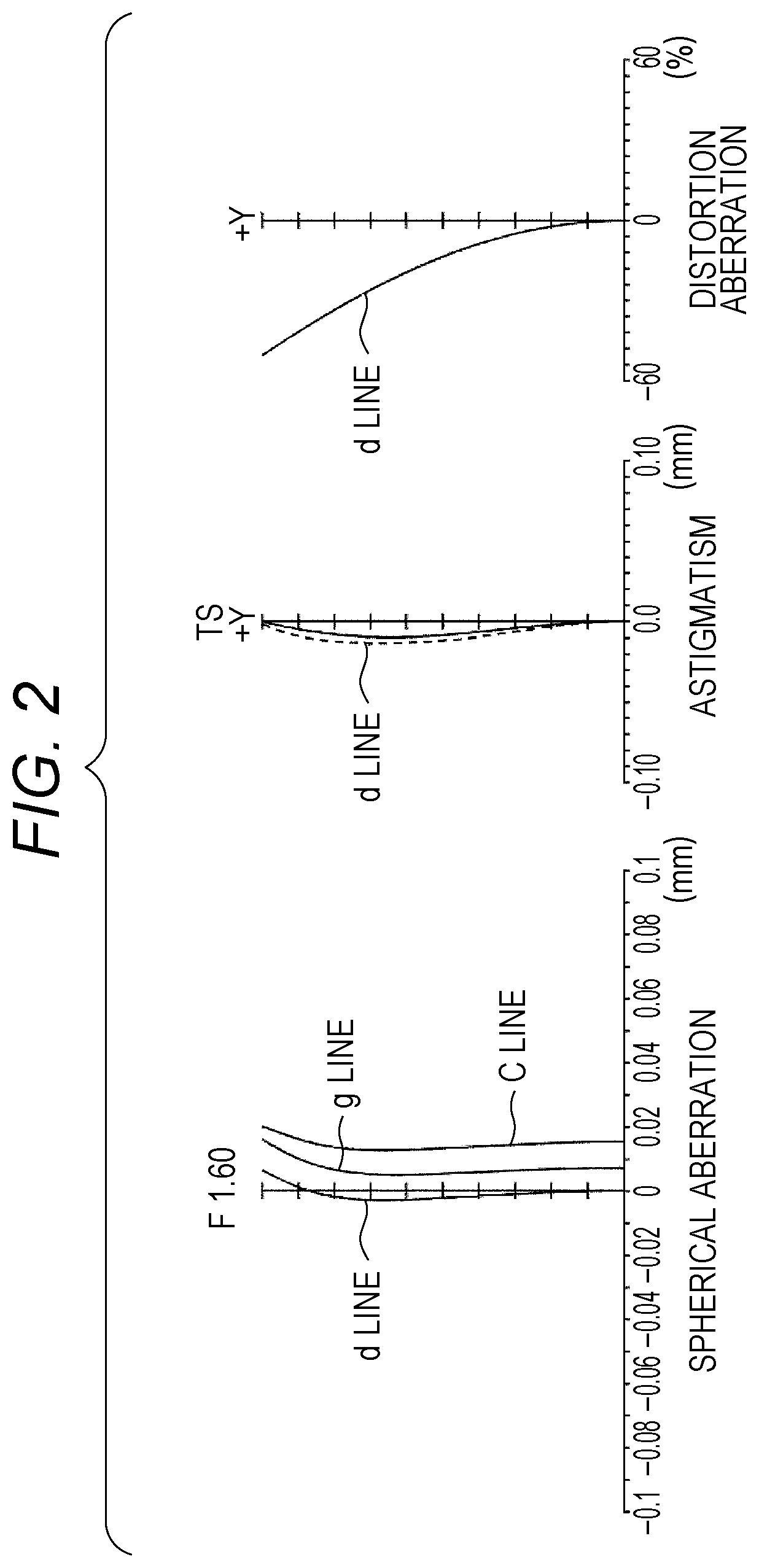Imaging lens and imaging device
a technology which is applied in the field of imaging lens and imaging device, can solve the problems of difficult to detect a far object, and achieve the effects of wide angle of view, reduced device size, and high resolution
- Summary
- Abstract
- Description
- Claims
- Application Information
AI Technical Summary
Benefits of technology
Problems solved by technology
Method used
Image
Examples
first embodiment
[0105](1) Configuration of Imaging Lens
[0106]FIG. 1 is a lens cross-sectional view of a configuration of an imaging lens according to a first embodiment of the present invention. The imaging lens includes a first lens G1 which has negative refractive power and has a biconcave shape, a meniscus-shaped second lens G2 which has a concave surface facing to the object side and has negative refractive power, a third lens G3 which has positive refractive power and has a biconvex shape, a fourth lens G4 which has positive refractive power and has a biconvex shape, a cemented lens formed by bonding a fifth lens G5 which has positive refractive power and has a biconvex shape and a sixth lens G6 which has negative refractive power and has a biconcave shape, and a seventh lens G7 which has positive refractive power and has a biconvex shape in order from the object side. As indicated in Table 1 to be described later, both surfaces of the third lens G3, both surfaces of the fourth lens G4, and bo...
second embodiment
[0130](1) Configuration of Imaging Lens
[0131]FIG. 3 is a lens cross-sectional view of a configuration of an imaging lens according to a second embodiment of the present invention. The imaging lens includes a first lens G1 which has negative refractive power and has a biconcave shape, a meniscus-shaped second lens G2 which has a concave surface facing to the object side and has negative refractive power, a third lens G3 which has positive refractive power and has a convex shape on the object side, a fourth lens G4 which has positive refractive power and has a biconvex shape, a cemented lens formed by bonding a fifth lens G5 which has positive refractive power and has a convex shape on the image side and a sixth lens G6 which has negative refractive power and has a biconcave shape, and a seventh lens G7 which has positive refractive power and has a biconvex shape in order from the object side. As indicated in Table 5 below, both surfaces of the second lens G2, both surfaces of the thi...
third embodiment
[0145](1) Configuration of Imaging Lens
[0146]FIG. 5 is a lens cross-sectional views of a configuration of an imaging lens according to a third embodiment of the present invention. The imaging lens includes a meniscus-shaped first lens G1 which has a convex surface facing to the object side, a meniscus-shaped second lens G2 which has a concave surface facing to the object side and has negative refractive power, a third lens G3 which has positive refractive power and has a biconvex shape, a fourth lens G4 which has positive refractive power and has a biconvex shape, a cemented lens formed by bonding a fifth lens G5 which has positive refractive power and has a biconvex shape and a sixth lens G6 which has negative refractive power and has a biconcave shape, and a seventh lens G7 which has positive refractive power and has a biconvex shape in order from the object side. As indicated in Table 9 below, both surfaces of the first lens G1, both surfaces of the third lens G3, both surfaces o...
PUM
 Login to View More
Login to View More Abstract
Description
Claims
Application Information
 Login to View More
Login to View More - R&D
- Intellectual Property
- Life Sciences
- Materials
- Tech Scout
- Unparalleled Data Quality
- Higher Quality Content
- 60% Fewer Hallucinations
Browse by: Latest US Patents, China's latest patents, Technical Efficacy Thesaurus, Application Domain, Technology Topic, Popular Technical Reports.
© 2025 PatSnap. All rights reserved.Legal|Privacy policy|Modern Slavery Act Transparency Statement|Sitemap|About US| Contact US: help@patsnap.com



